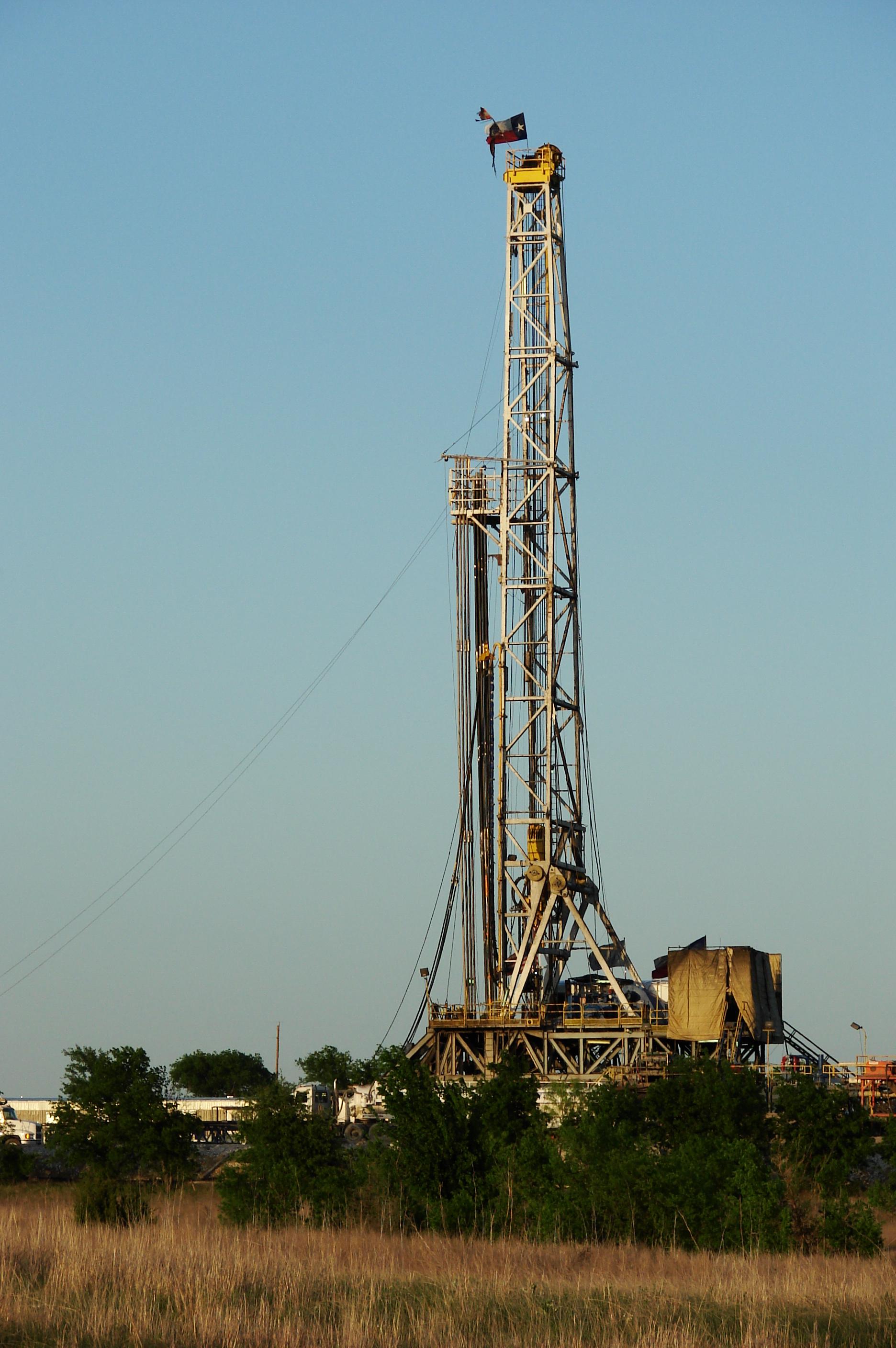Researcher looks to better understand climate risks of leaky natural gas wells
Gas wells, like the one being built here near Alvarado, Texas, in 2008, will eventually leak, scientists say, releasing greenhouse gas methane into the environment. (Photo by David R. Tribble via Wikimedia Commons.)
President Obama has touted natural gas as a valuable bridge fuel to transition the U.S. to renewable energy. But there’s a catch that isn’t often mentioned — the methane that leaks from oil and gas wells.
Methane is about 25 times more powerful than CO2 as a global warming gas, and nobody knows for sure how much of it is actually leaking. But, Tony Ingraffea, a professor of civil and environmental engineering at Cornell University, is trying to find out. His lab models the failures that lead to methane leaks.
With 4.2 million oil and gas wells scattered around North America, he has a big job ahead of him.
“We don’t really have a count for how many are leaking and more importantly, we don’t have a measure of how much methane is leaking from all those leaking wells,” he said.
And not everyone agrees there is even a problem. Back in April, the EPA reported that production-related methane emissions are actually down even as the amount of drilling has skyrocketed.
“The EPA reported that their estimates of EPA emissions are down,” Ingraffea said, drawing a distinction. “Neither the EPA nor any objective independent entity has ever measured methane emissions across the board.”
Ingraffea likens it in some ways to balancing your checkbook without knowing how much money you started with. You know what came in and went out, but you don’t know what was there to begin with.
And Ingraffea says figuring out exactly how high leak rates are is crucial to determining if natural gas is really helping us stave off climate change.
“If that leak rate is anything more than about 2% of the total production of natural gas, then there’s no benefit, there’s certainly no immediate benefit to changing over from coal to natural gas for electricity generation,” he said.
Further compounding the problem, Ingraffea says it’s not even really possible for us to build oil and natural gas wells that don’t leak.
“Any human made structure will eventually degrade to a point where it’s no longer maintaining its original designed function,” he said.
In particular, he cites risk of cement cracking and releasing gases out of the well. Further complicating matters, once a well is built, it has to hold forever. But the company that installs the well is only interested in it so long as it’s producing oil or gas.
As Ingraffea seeks to determine how bad the problem is, he’s run into a very real problem in that drilling for fossil fuels has gone on for a century, and many of the oldest wells are basically lost.
“Records back then weren’t nearly as good as they are today. So a very large percentage of those millions of wells are called lost and abandoned. This is an unsolved problem,” he said.
Ingraffea says all of this points to natural gas being less of a bridge — and more of a gangplank. As we walk across, we may discover there’s nothing waiting for us on the other side.
